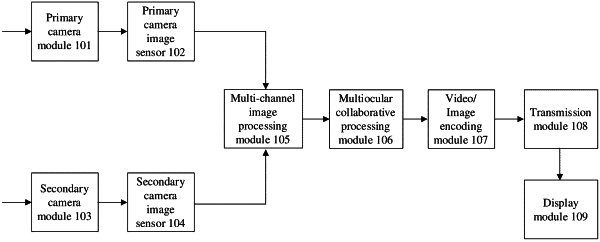| CPC H04N 23/55 (2023.01) [G02B 5/0883 (2013.01); G02F 1/163 (2013.01); G03B 19/12 (2013.01)] | 20 Claims |

|
1. An optical path switching method, wherein the method is applied to a surveillance module, the surveillance module comprises a camera, a teleconverter, a switching element, and a reflection element, wherein the camera uses a zoom lens, the teleconverter uses a fixed-focus lens and forms an optical path folding structure, an emergent optical axis of the teleconverter is unparallel to an incident optical axis of the camera, an incident optical axis of the teleconverter is parallel to the incident optical axis of the camera, the switching element is configured to change a location or a working status of the reflection element, and when the reflection element is at a first location or in a first working state, the camera performs image capture alone, or when the reflection element is at a second location or in a second working state, the reflection element is configured to reflect emergent light of the teleconverter to the camera along the incident optical axis of the camera, so that the camera and the teleconverter jointly perform image capture; and the method comprises:
determining a target magnification; and
(i) when the target magnification is less than or equal to a maximum magnification of the camera, setting a magnification of the camera to the target magnification; and
setting the reflection element to be at the first location or in the first working state, and performing image capture by using the camera; or
(ii) when the target magnification is greater than the maximum magnification of the camera, setting the magnification of the camera to a first magnification, wherein a product of the first magnification and a magnification of the teleconverter is the target magnification, and the target magnification is not greater than a product of the maximum magnification of the camera and the first magnification; and
setting the reflection element to be at the second location or in the second working state, and performing image capture by using both the camera and the teleconverter.
|